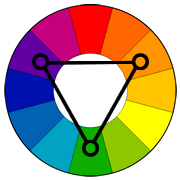
야외 화가이자 4세대 예술가라는 Jed Dorsey 가 풍경화에 화려한 색상을 넣기 위한
조언 중 일부 참고가 될만한 말이 있어 옮긴다 ( 4세대 예술가가 무슨 말인지는 모르겠지만 )
( 번역은 구글 번역 그대로, 영어 원문은 맨 뒤에 )
----------------------------------------------------------------------------------------------------------------
다채로운 야외 풍경화 그리기 ( 아크릴 그림 )
위에 있는 그림 "어느 밝은 아침"은 햇살이 밝고 아름다우며 빠르게 변하는
아침 중 하나였습니다. 시간이 별로 없다는 것을 알았기 때문에 준비하고
바로 움직이기 시작했습니다. 이런 상황에서 중요한 것은 무엇이 필수적이고
무엇이 중요하지 않은지 아는 것입니다.
주요 모양을 상당히 정확하게 만드는 데 집중한 다음 햇살과 그림자의 느낌을
포착하는 데만 집중했습니다. 어두운 톤의 캔버스를 선택했기 때문에 적용한
모든 색상이 명암 척도를 올렸습니다. 뒤쪽 집의 파란색은 과장하기 쉬웠고,
다른 색상도 더 강조할 수 있었습니다. 항상 고치고 싶은 것이 있기는 하지만,
저는 종종 시간이 촉박한 상황에서 그린 이런 그림의 자연스러운 느낌을 좋아합니다.

이 그림 "Of Sun & Shadows"에서 저는 색상을 더 미묘하게 표현했습니다.
장면에 거리가 많지 않았기 때문에 배경의 푸른 회색을 과장하여 깊이를 더했습니다.
또한 배경의 밝은 부분 중 일부를 억제하여 같은 느낌을 구현했습니다.
생생한 색상을 그리기 위한 7가지 팁
1. 그림을 연구라고 부르세요. 작업하는 것을 그림이 아닌 연구라고 생각하면 자유로움을
느낄 수 있습니다. 걸작을 만들려는 것이 아니라 배우려는 것입니다.
2. 밝은 톤의 캔버스를 사용하세요. 이것은 그림을 반짝이게 만드는 가장 쉬운 방법이
될 수 있습니다. 반드시 작업 방식을 바꿀 필요가 없기 때문입니다. 그저 밑그림 중
일부를 비춰보세요.
3. 미묘함을 과장하세요. 장면을 자세히 살펴보세요. 하늘의 푸른 보라색이 땅 그림자에
반사되어 있나요? 다채로운 나무, 집 또는 보트가 있나요? 이미 있는 색상을 찾아
약간 과장하세요.
4. 명암은 유지하고 색조를 변경하세요. 제 생각에 색상의 내재적 가치가 가장 중요한 속성입니다.
즉, 명암을 올바르게 유지하는 한 색상의 색조와 채도를 상당히 실험하고 변경할 수 있습니다.
5. 각 색상에 다양성을 더하세요. 완전히 채도가 높은 색상만 있는 그림은 압도적일 수 있습니다.
더 깨끗하고 채도가 높은 색상 옆에 둔하고 회색이 도는 색상을 배치하면
다양성이 생기고 채도가 높은 부분이 더 화려하게 보입니다.
6. 회색을 사용하여 눈이 쉴 수 있는 공간을 제공합니다. 그림의 일부(예: 하늘)를 단순한
중립적인 회색으로 만들면 보는 사람의 눈이 쉴 수 있는 공간이 생기고 장면에 평화를
가져다주는 데 도움이 될 수 있습니다.
7. 색상에 목소리를 부여하세요. 조지아 오키프는 "다른 방식으로는 표현할 수 없는 것을
색상과 모양으로 표현할 수 있다는 것을 알게 되었습니다. 말로 표현할 수 없는 것"이라고 말했습니다.
좋아하는 장면을 볼 때 어떤 기분이 드십니까? 그 장면에 대해 무엇을 말하고 싶으십니까?
말로 표현할 수 없는 것을 어떻게 색상을 사용하여 표현할 수 있습니까?
On Painting a Colorful Plein Air Landscape
The painting shown at the top, “One Bright Morning,” was one of those mornings where the sunlight was brilliant, beautiful, and quickly changing. I set up and just started moving, because I knew I didn’t have long. The key in these situations is to know what is essential and what isn’t.
I focused on getting the main shapes fairly accurate, and then just worked on capturing the feeling of the sunshine and shadows. I had opted for a dark-toned canvas, so every color I applied was moving up the value scale. The blue of the house in the back was easy to exaggerate, and it allowed me to push the other colors further also. While there is always something I’d like to fix, I often love the spontaneous feeling of these paintings done under a time crunch.
In this painting, “Of Sun & Shadows,” I pushed colors in a more subtle way. There wasn’t much distance in the scene, so I exaggerated the blue grays of the background to create more depth. I also subdued some of the lighted areas of the background to accomplish the same feeling.
7 Tips for Painting Vibrant Color
- Call your painting a study. When you think of what you’re working on as a study instead of a painting, it can encourage a sense of freedom. You’re not trying to create a masterpiece; you’re just trying to learn.
- Use a brightly toned canvas. This can be the easiest way to make your paintings sparkle, because it doesn’t necessarily require a change in the way you work. Simply let some of the underpainting shine through.
- Exaggerate the subtleties. Look closely at the scene. Is there a blue violet from the sky reflected in the ground shadows? Is there a colorful tree, house, or boat? Find the colors that are already there and exaggerate them a little.
- Keep the value; change the hue. In my opinion, a color’s inherent value is its most important attribute. This means you can experiment and change the hue and saturation of colors quite a bit as long as you keep the values correct.
- Add variety to each color. A painting that only has fully saturated colors can be overwhelming. Placing dull, grayed-down colors next to the cleaner, more saturated colors also creates variety and makes the saturated areas appear more colorful.
- Use gray to give the eye a place to rest. Making a portion of the painting (the sky, for instance) a simple neutral grayish color provides a resting place for the viewer’s eye and can help bring a sense of peace to the scene.
- Let color have its voice. Georgia O’Keeffe said, “I found I could say things with color and shapes that I couldn’t say any other way — things I had no words for.” What do you feel when you see a scene you love? What do you want to say about it? How can you use color to say what words can’t?

'그림공부' 카테고리의 다른 글
| ( 그림공부 ) Put Less In, Get More Out (1) | 2024.11.17 |
|---|---|
| ( 그림공부 ) 9 Ways to Improve Your Quick Painting / Pochade Skills (1) | 2024.10.26 |
| ( 그림공부 ) Be Wild, Stay True (0) | 2024.10.05 |
| ( 그림공부 ) 모든 것을 지배하는 하나의 규칙 !! (2) | 2024.10.03 |
| ( 그림공부 )Landscape Painting Demo: Designing for Balance (3) | 2024.09.26 |




